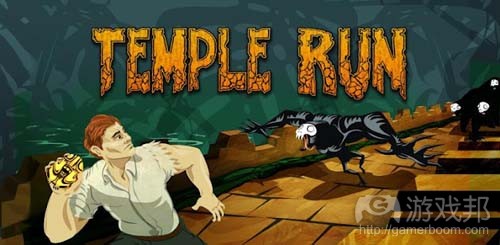开发者应提炼“三个关键词”以创造游戏
作者:Nicholas Lovell
最近我开始面向我的咨询客户展开一项名为“三个关键词”的调查。
这一调查的主旨在于找出三个最能呈现出游戏“感觉”的单词。我的目的并不是进行“电梯游说”,我并不希望开发者将这三个单词作为市场营销材料去吸引玩家的注意,而是希望他们能够将其作为一种开发工具帮助广大开发者创造出更出色且更具凝聚力的游戏。
如果你正在制作一款游戏,请务必花些时间写下三个最能表现你的游戏风格的关键词。最好仅凭第一感觉,不要进行过多的思考。
让我通过两款游戏来传达这3个关键词所具有的特殊魔力。
当一款游戏并不是游戏时
“无尽奔跑”类游戏已经步入了稳健的发展轨道。像《火箭飞人》和《神庙逃亡》等游戏都因为极其简单的游戏机制在排行榜单上取得了非常出色的成绩。玩家将以一种稳步提升的速度去移动角色,并在最终面对死亡(不可避免)前努力闪避,跳跃或避开各种障碍物。
让我们看看以下的屏幕截图。《神庙逃亡》是以丛林为背景的《古墓丽影》和《夺宝奇兵》式无尽奔跑类游戏。与之相反的《火箭飞人》则是一款横向卷轴式无尽奔跑游戏,玩家可以炸毁实验室并佩带着各式各样的火箭背包出逃。它们的图像(游戏邦注:包括各种审美元素)都具有很大的差异。
所以你认为游戏中的三个单词分别是什么?
我认为这两款游戏都具有极强的情感冲击性。开发者希望能够牢牢控制住玩家的情感。为了让玩家的大脑能够真正进入“打斗”模式,游戏都通过较小的屏幕显示去避开各种破坏力量。而为了让玩家能够摸索到游戏中那些难以琢磨的过程,玩家就必须全神贯注于游戏中。
其次便是能够让人感到愉快。游戏具有较快的节奏,并且会随着时间的发展而不断加快。整个游戏设计都带给了玩家一种速度幻觉,而这也是这两款游戏的关键元素。
最后便是这两款游戏的区别。《神庙逃亡》所带给玩家的感受是失控,而《火箭飞人》则是把控。在《神庙逃亡》中玩家将被骷髅头猴子所追赶,角色就好似在为了活命而奔跑着,并穿越各种树根。游戏的控制机制非常宽松,只要玩家能够在适当的时间出击,便能够自如地转弯或跳跃。这一点非常重要,因为障碍物总是会以极快且密集的状态出现在玩家面前。我在游戏中的最大感受便是角色的每一次复活都是一种奇迹。
《火箭飞人》则与之相反。比起基于第三人称视角的《神庙逃亡》,横向卷轴视角让玩家能够拥有更多时间去面对各种障碍物。游戏提供给玩家极其精准且连贯的动画,让我们能够顺畅地体验游戏乐趣。游戏的背景是非常清晰的实验室或科学设备,甚至连后面的丛林都具有较高的比特率。这是一款具有精准的受控环境的游戏——虽然这种精准是以一种极快的速度呈现出来。
这是游戏开发者的目的吗?
我猜Halfbrick和Imangi都已经着手利用这三个单词了。我敢打赌(付出了这么多努力),创造性团队肯定能够想出更多能有效结合在一起的内容。《神庙逃亡》所呈现出的真实般的丛林,动画,美术风格,信息,菜单,音乐等都被有效地整合在了一起。《火箭飞人》亦是如此。
让我们着眼于另外一种创造性内容,即书籍——总是受益于作者对主题的探索。Stephen King在著作《On Writing》中便提到了那些梦想成为小说家的人必须将已完成的手稿收进抽屉中,六周不去理会它。然后去重温自己所撰写的故事,寻找连接着整个故事的大主题。而当你明确了最根本的主题后,你就需要去增强与这些主题相关的故事元素。你应该改变隐喻,削减场景,添加其它更能突显故事主题的元素。总之,你应该努力呈现出故事最内在的内容。如此你才能为读者呈现出最让他们满意的阅读体验(尽管他们可能根本就意识不到你所付出的努力)。
如何使用“三个单词”
如果说《火箭飞人》是关于情感冲击,节奏与控制,那么开发者就必须在美术风格,动画风格和音乐风格上去突显这些单词。而如果游戏所表达的是“失控”,那么开发者所面对的也将会是完全不同的内容。
同时你还必须选择最精准的单词去形容你的游戏。就好比用幽默去形容游戏便不太合适。
你需要将这些单词完全融入游戏设计过程中。并不是只画出一些可爱的角色便可以用“可爱”这一单词去形容游戏,如果你的动画,音乐,菜单甚至是游戏机制都不可爱,那么你的游戏便是拥有一些完全不同的元素。
这便是你所寻找的内容——所有不同的游戏元素都融进了一个完美且珍贵的游戏体验中。
(本文为游戏邦/gamerboom.com编译,拒绝任何不保留版权的转载,如需转载请联系:游戏邦)
Three words – just three little words – that will save your game
By Nicholas Lovell
I have started doing a new exercise with many of my consulting clients. I call it “three little words”.
The idea is to find the three words that encapsulate the “feel” of your game. It’s not quite the same as the hook or the elevator pitch. The three little words are not supposed to be used in your marketing materials, or to attract players. They are a development tool to enable you to make a better, more coherent game.
So if you are working on a game, take a moment to write down on a scrap of paper the three words that encapsulate your game. Do it quickly, without too much thought.
Done it?
Good. Now lets look at two games and how the 3 little words can make a real difference.
When a game is not a game
The “endless runner” genre is now well established. Games like Jetpack Joyride and Temple Run have had chart success from an easy pick-up-and-play mechanic. Your character moves through the game at a steadily increasing pace and you have to duck, jump, dodge or otherwise avoid hazards until you, inevitably, die.
Take a look at the screen shots below. Temple Run is the Tomb Raider-esque, Indiana Jones-esque endless runner set in a jungle. Jetpack Joyride by contrast, is a side-scrolling endless runner where you blast out of a laboratory and try to escape while wearing a variety of improbably jetpacks. The graphics – and many other aspects of the aesthetic – are quite different.
So what do you think the three little words were?
For me, both games are about adrenaline. The developers wanted the player to be on the edge of their seat. For the brain to engage fight-or-flight mode, scanning the tiny screen for threats in an attempt to stave off inevitable destruction. For the player to search out that elusive “flow”, a trance-like state where a player is one with the game.
They are also about exhilaration. They are fast. They get faster over time. The entire design gives players the illusion of speed, and this is key to both games.
The third one is where they differ. I think that Temple Run is about the feeling of being out of control while Jetpack Joyride is about being in control. In Temple Run, you are being chased by skull-faced monkeys. Your character runs as if he is running for his life. He stumbles across tree roots. The control mechanism is very forgiving – if you swipe or tap at vaguely the right time, you turn or jump. This is important, because the hazards come thick and fast. The scenery is scrappy, organic, falling to pieces. My overwhelming feeling while playing the game is that every second that I survive is a miracle. I am lucky not to be dying every single moment.
Contrast that with Jetpack Joyride. The side-scrolling viewpoint gives you more time to consider hazards than the third-person viewpoint used by Temple Run. The animation is precise, not scrappy. You never trip or stumble. The backgrounds have the clean precision of a laboratory or scientific facility. Even the bits in a jungle put the jungle behind glance. This is a precise, controlled environment for a precise, controlled game, albeit one where your precision is happening at breakneck pace. (As an aside, I wonder this is why AAA game developers, and particularly coders, all seem to prefer Jetpack Joyride.)
Is that what the creators intended?
I doubt that Halfbrick and Imangi sat down to look for these three words. I bet that – as happens with so many endeavours – the creative team came up with things that just felt right together. The organic jungle feel of Temple Run, its animations, art style, messaging, menus, music, everything, integrated into one wonderful whole. Ditto Jetpack.
To take analogy from another creative endeavour, books often benefit from searching out their theme. In his excellent On Writing, Stephen King proposes that would-be novelists put their finished manuscript in a drawer and ignore it for six weeks. They should then revisit the story, looking for the big themes that connect the important parts of the story. When you find the underlying themes, strengthen the elements that use the theme. Change metaphors, cut whole scenes, add others that make the theme (or themes) more relevant throughout the book. In short, work out the story is really about, underneath the tale it purports to tell. The result will be a tighter, more satisfying read, even if most readers will never notice the effort that you have gone to.
How to use “three little words”
That is the idea behind three little words. If Jetpack Joyride is about adrenaline, pace and control, that would suggest one art style, one animation style, one music style. If it was about being “out-of-control”, it might suggest a totally different one.
Note that the words you use need to be precise. It is no good saying that your game is humorous. Is it slapstick? Gross? Dry? Deadpan? Over-the-top? Satirical? Sharply-observed? Witty?
You need to live and breathe the words throughout your game design. You can say your game is “cute” just by drawing cute characters, but if the animations, music, menus or even core mechanics are not cute, you just have a game where the different elements jar, not meld.
And that is what you are looking for. A game where all the disparate elements meld into one perfect little gem of an experience.
What do you need to make that happen?
Just three little words.(source:gamesbrief)









































 闽公网安备35020302001549号
闽公网安备35020302001549号